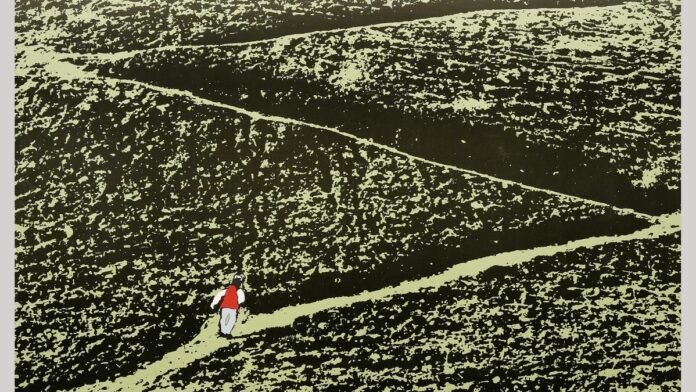Here’s a related situation: You’ve just returned from school, and you realized that by mistake, your friend’s homework book came home with you, and not completing the day’s homework will result in a punishment from the class teacher, leaving you with no choice but to return the book back to your friend. The situation here has now eased a bit. This is rural Iran in 1987, and smartphones, the Internet, and GPS did not exist then. On top of that, you have no clue where your friend lives except the name of your village. What’s the best thing you can do in this scenario? Embark on a walk that will soon become a discovery.
I was introduced to the beauty of Iranian cinema through Abbas Kiarostami and the wonderfully deceptive simplicity of his works. ‘Where is your friend’s house?’ This is the first film of what would become the Coker Trilogy, and there seems to be a sense of wonder at the beginning of this deeply thoughtful film. It was also Kiarostami’s film that I watched, only because I saw a particular shot used in the film during a period when there was still no concept of Reels on social media. Through each character, a quick look at each lens creates a kaleidoscope of people, each with their own worldview, thought process, and behavior. Young Ahmed is naive, but above all, he is a good person. You can see this in his actions when, early in his journey, his grandfather forcefully sends him out to buy tobacco, allowing the camera to rest on the old man and his companions, whom he claims will soon make a “man” out of Ahmed. When asked how he would do this, Ahmed’s grandfather said that through violence (beating), Ahmed would not only develop values but would eventually gain respect in the society. Whereas in the prologue, this conversation talks directly about innocence and its loss; Looking closer, you begin to see the subtle political tones left by the director to tie the audience together, creating a deeper puzzlement of a regime in which many great filmmakers (and artists) are now being prevented from being able to express themselves.
Of course, not all older characters are equal in thinking, and in Ahmed’s inevitably difficult journey (especially for a child), he finds help from people who open new doors and windows of thought. The film is filled with so many beautiful details that one could easily miss, carried away by its simplicity, and yet you wonder how someone could convey so much more than what is said using that simplicity. It is very easy to debilitate a child with the idea of an adult’s “inexperience”, a notion in which adults often make the grave mistake of forgetting that not only do children have feelings (perhaps they are more in tune with their emotions than most adults) but also that they too were once children.
Coming back to the shot that introduced me to this film, in its sweeping grandeur, when thought about it seems an echo of something far greater. A winding, mountainous path with a lone tree at the top of a hill is one of the many spectacular ways Kiarostami uses landscape in his filmography. However, this shot in particular feels like a motif on the tortuous nature of life. And young Ahmed crosses it – disobeying the commands of adults because he wants to help a friend, because only he knows its importance. It is not the great act of friendship that worries him so much as the possibility of his friend not being able to complete his task. Throughout the film’s finale, Kiarostami provides closure in ways that, quite simply, almost no one has been able to do, or at least, in the consistently subtle ways that he has been able to use in constantly recycled ways throughout his illustrious career, and the result is a wide smile, a heart full of hope, and a flower used as a bookmark that, for us, an audience, will forever remind us of such a journey. Will give that was never written but seen in its beautiful, simple glory.
published – October 12, 2025 04:10 PM IST
